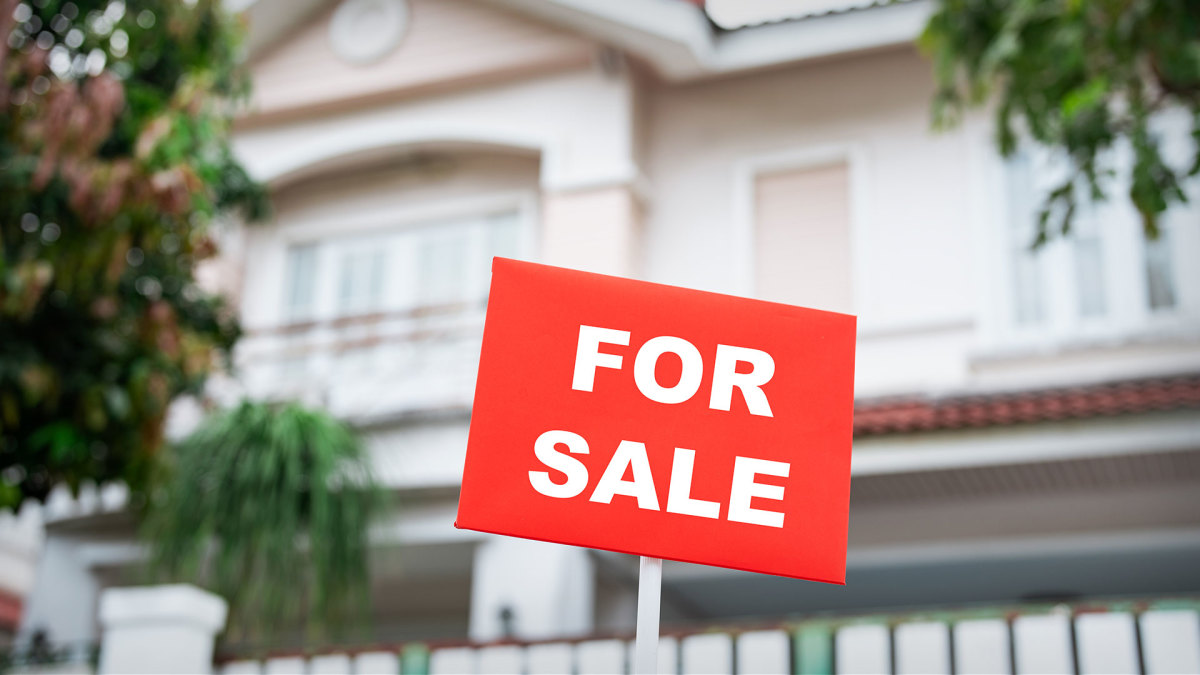
If you're a home buyer or a home seller, mortgage rates are always a big concern.
And rates are going in the wrong direction, even topping 8% this past week.
If rates, which briefly reached 8% this past week, move back up and stay there for a protracted amount of time, existing home prices could fall as much as 5%, investment bank Morgan Stanley says.
That would be a shock to sellers, many of whom already are seeing sales drop in local markets. Buyers would be hurt, too. Supply for homes is already tight, and obtaining financing would be harder.
Related: The best time to buy a house? New data says it's now
Mortgage rates at 8% or so could cause home prices to be flat by the end of the year, under Morgan Stanley's base-case forecast. And if mortgage rates just stick around this level, demand will see downside pressures increase.
Many economists and analysts see rates starting to come down in 2024.
How much of a shock would a prolonged period of 8% mortgage produce?
Here's Morgan Stanley's view: "Even a 5% growth in inventory next year would yield a 5% drop in home prices by December 2024 if it came alongside zero increase in sales."
The 8% number comes from Mortgage News Daily, which tracks rates daily. It is the highest rate since mid-2000, and the rate surge has contributed to slumping existing-home sales since 2021.
The rate on a 30-year mortgage (the most popular U.S. mortgage) bottomed at under 3% in late 2021 and hit 4% by March 2022.
So, let's say you were lucky enough to get a 4% loan on a median-priced home at $394,00 and a 17% down payment. (That's a typical down payment size, according to National Association of Realtors data.)
The monthly payment at 4% (before taxes and insurance) would be nearly $1,563. At 8%, the payment jumps to $2,402. That's a jump of $839 or nearly 54%.
NAR data show sales dropping 35% from 6.1 million units in 2021 (including single-family homes and condos) to a rate of 3.96 million units in September. That's the lowest rate since 2010, as the recovery from the Great Recession was just beginning. The median price of a U.S. home has been hovering around $400,000 since May.
The median price of a new home is about $430,000, according to the U.S. Census Bureau.
A contributing factor to sales rates is that many homeowners with low-rate mortgages don't want to sell. So inventories of homes for sale in many markets have shrunk.
New-home sales are off, too, but many builders are willing to buy down mortgage payments for set periods of time to help a sale go through. A typical buydown deal is to subsidize the buyer two percentage points from the mortgage rate in the first year after the sale. In the second year, the subsidy drops by 1% on the loan rate.
How long might 8% mortgages last? We should note that Mortgage News Daily, which calculates the number with daily lender surveys, saw the 30-year rate hit 8% on Oct. 18 and reach 8.03% the next day. The day following, the rate had faded back to 7.97%.
The Oct. 20 decline mirrored changes in bond-market levels for the week. The yield on the 10-year Treasury note reached as high as 4.99% on Oct. 18 but closed at 4.928% on Oct. 19.
But past is not indicative of future for two reasons.
First, the Federal Reserve, whose policies drive interest rates, isn't making noises about cutting rates soon. At best, the Fed is willing to hold rates steady. Analysts see rates starting to come off only in the spring.
Second, there is way too much global turmoil, including violent turmoil in Ukraine and in the Middle East. The U.S. government is running huge deficits now to pay for higher defense and other spending. And financing those costs has let investors push yields sharply higher in recent weeks. The yield was as low as 3.31% in April and has moved higher since, especially since the end of September.
The interest-rate issues hurting residential real estate activity is hurting shares of a host of companies.
PulteGroup (PHM) -), D.R. Horton (DHI) -) and Lennar (LEN) -), among the biggest U.S. builders, are up more than 12% this year. But they've fallen 20% or more from their highs of the year in late July. The iShares Dow Jones U.S. Home Construction exchange-traded fund, which tracks the industry, is up 20% for the year but down 19% since July.
Home-improvement retail giant Home Depot (HD) -) is down 15.3% since July and down 9.3 % for the year.







